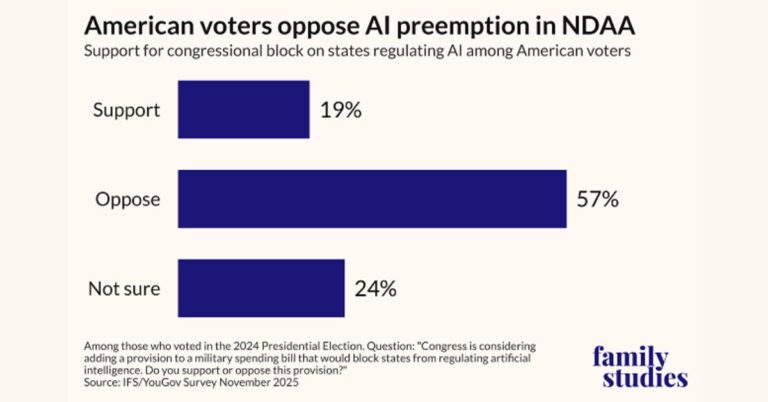Overcoming Service-Level Challenges in Private Networks
Private networks are increasingly being deployed to support mission-critical applications that demand high reliability, stability, and predictability. These networks do not replace existing Wi-Fi, wired, or public 4G/5G networks; instead, they complement them by filling gaps in performance and reliability. However, this shift introduces several challenges for enterprises:
Managing Fragmented Ecosystems in Private Networks
Unlike traditional systems, private networks rely on a fragmented ecosystem with multiple vendors supplying various components such as rugged devices, push-to-talk systems, radios, cores, and service assurance tools. This disaggregated setup complicates operations and makes it harder to ensure service levels. Organizations often face the challenge of integrating disparate solutions into a cohesive system.
Lack of Monitoring Standardization
The absence of standardized monitoring protocols like SNMP, which are widely used in enterprise networks, further complicates the landscape. Vendor-specific solutions dominate, making end-to-end monitoring difficult. Reactive troubleshooting processes are common, with little to no proactive SLA management.
Financial Pressures and Skill Shortages
Private networks involve additional costs for deployment and maintenance, which can strain budgets. Even when financial resources are available, enterprises struggle to find skilled professionals capable of managing and operating these networks. This skill shortage is a critical bottleneck, preventing many organizations from realizing the full potential of private networks.
Evolving Technology and Operational Models
Private networks are built on rapidly evolving technologies, with standards and market players continually shifting. This makes it challenging for organizations to maintain confidence in their ability to operate these networks as planned. The reliance on innovative yet immature solutions adds another layer of complexity.
How Anritsu Addresses These Challenges
Anritsu takes a holistic approach to addressing the challenges of private networks, emphasizing service assurance rather than traditional network monitoring.
Vendor-Agnostic Service Assurance
Anritsu’s solutions are vendor-agnostic, allowing enterprises to manage their networks regardless of their technology stack. This ensures flexibility and future-proofing, as organizations can adopt or switch vendors without disrupting their service assurance framework.
User-Centric Network Management
Instead of focusing solely on infrastructure components, Anritsu emphasizes a user-centric approach. This involves understanding how network performance impacts specific users, applications, or areas. For example, a network with 99.9% availability may still fail to meet expectations if the 0.1% failure affects critical applications or users.
End-to-End Visibility
Anritsu provides comprehensive visibility across the network, from the core infrastructure to end-user devices. Tools like Smartvisor enhance this capability by enabling continuous monitoring of user experiences, ensuring that networks deliver on their intended SLAs.
Open and Adaptive Frameworks
Anritsu’s platforms are designed to integrate seamlessly with existing IT ecosystems, including hypervisors, ticketing systems, and analytics tools. This open and adaptive approach helps enterprises move beyond siloed management and achieve holistic service assurance.
Proactive Insights and Decision Support
By analyzing data from network components, Anritsu helps enterprises identify potential issues before they impact users. This proactive approach enables organizations to optimize network performance and maintain high service levels.
How Service Assurance Differs from Traditional Network Monitoring
Service assurance encompasses a broader range of capabilities than traditional network monitoring, addressing diverse use cases and user needs.
Multi-Persona Support
Anritsu’s service assurance platform uses the same raw data to provide insights for various personas, from helpdesk teams to network operators and senior managers. For example, signaling data can be used for detailed troubleshooting, technical KPIs for operations centers, and high-level dashboards for business managers.
Seamless Navigation Between Metrics
Service assurance enables seamless transitions between high-level service views and granular data. For instance, enterprises can drill down from overall SLA metrics to individual signaling records, enabling precise issue identification and resolution.
Comprehensive Use Cases
While monitoring focuses on technical KPIs consumed by network operations teams, service assurance extends its scope to include user experience, application performance, and business outcomes. This ensures a holistic view of network performance.
Operational Models for Supporting Private Networks
Private networks require diverse operational models to meet the needs of different deployment scenarios.
Traditional On-Site Models
Dedicated on-site teams provide tailored solutions for large enterprises with specific needs. However, these models are costly, difficult to scale, and dependent on scarce skilled resources.
Shared Services and Managed Models
The industry is shifting toward shared services models, where centralized operations centers support multiple enterprises. Managed services centers can handle up to 85% of standard operations, leaving only custom requirements for on-site teams. This approach reduces costs and accelerates deployment timelines.
Virtualized and Hybrid Models
As 5G technologies mature, virtualized network models with slicing capabilities are becoming more prevalent. These models allow enterprises to access standardized services while enabling customization through advanced analytics, dashboarding, and integration.
Anritsu’s platform supports all these models, providing flexibility in data aggregation, centralization, and acquisition. Whether fully on-site, hybrid, or centralized, Anritsu adapts to the needs of each deployment.
Insights from a European Airlines Deployment
A recent deployment with a European airline highlights key lessons in managing private networks.
Outcome-Driven Approach
This project focused on achieving business outcomes rather than technical KPIs. Anritsu adopted a consultative approach, helping the airline define its needs and align them with network capabilities. The goal was to deliver value across the organization by leveraging data from network components.
Blurring Lines Between Private and Public Networks
The airline used dual SIM cards to enable seamless roaming between private and public networks. This hybrid approach ensured uninterrupted coverage for critical applications, representing a growing trend in private network deployments.
Leveraging User Devices for Monitoring
Anritsu transformed end-user devices into a network of probes, providing real-time insights into network behavior. This approach enhances monitoring capabilities and offers a heat map of network performance from the user’s perspective.
Monetizing Data Insights
By integrating data from network devices into its platform, Anritsu enabled the airline to extract actionable insights. This included identifying new devices on the network and determining how to optimize their use. Anritsu’s open platform design facilitated easy integration and data monetization.
Supporting Diverse Enterprise Use Cases
Private networks serve a wide range of use cases, from fully dedicated on-site deployments to hybrid and centralized setups. Anritsu’s platform is designed to support all these models, providing flexibility in deployment and management.
However, for private networks to scale effectively, enterprises must embrace shared services and external operating centers. Cultural resistance to off-the-shelf solutions remains a challenge, but the scarcity of skilled professionals makes this shift inevitable. Managed services offer a cost-effective, scalable solution for maintaining high service levels across industries.
Summary
Private networks are critical for supporting mission-critical applications, but their success depends on overcoming challenges like fragmentation, skill shortages, and financial pressures. Anritsu’s service assurance platform addresses these issues by providing vendor-agnostic, user-centric, and open solutions that ensure end-to-end visibility and operational efficiency.
By adopting flexible operational models, leveraging user devices for monitoring, and focusing on business outcomes, Anritsu enables enterprises to maximize the value of their private networks. The insights gained from deployments like the European airline demonstrate the potential of private networks to deliver reliable and measurable benefits across industries.







































